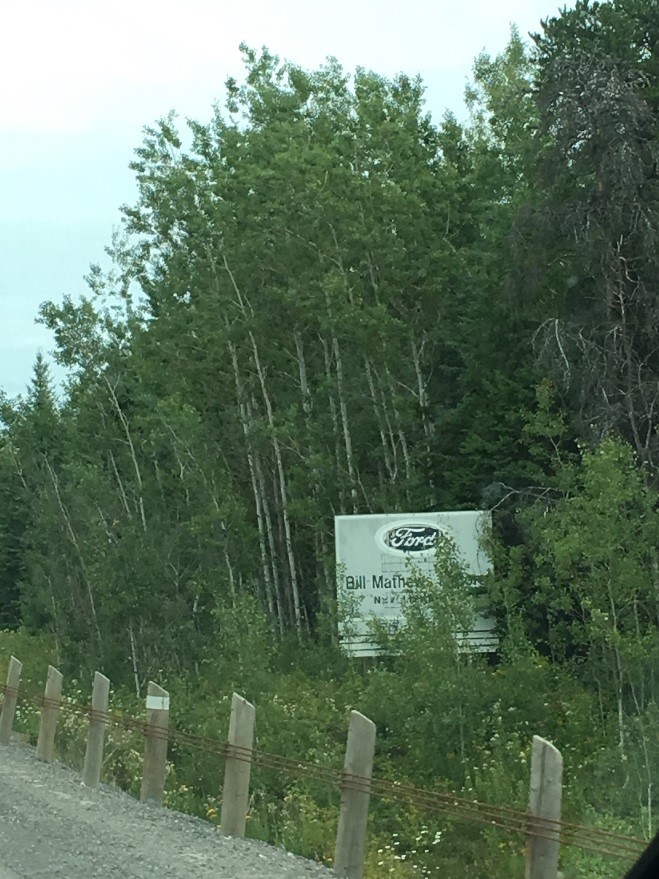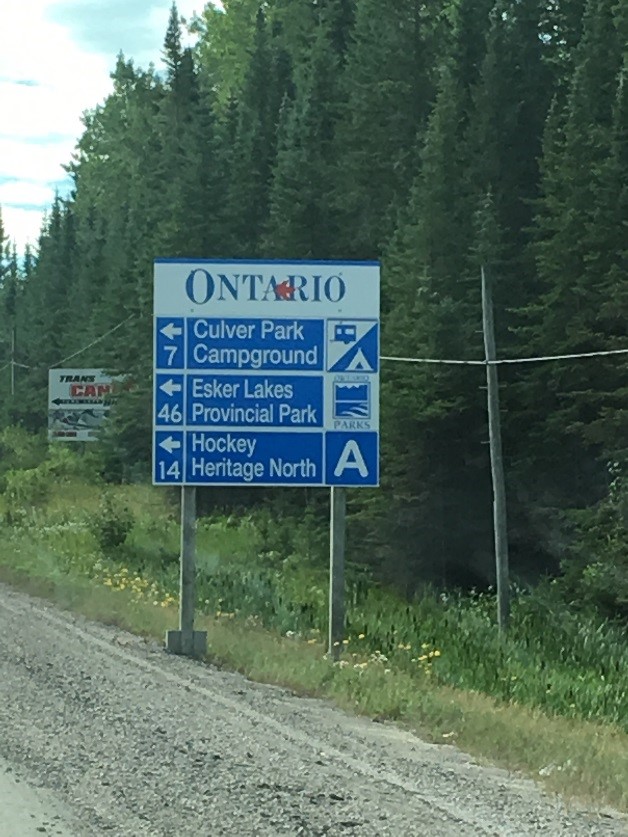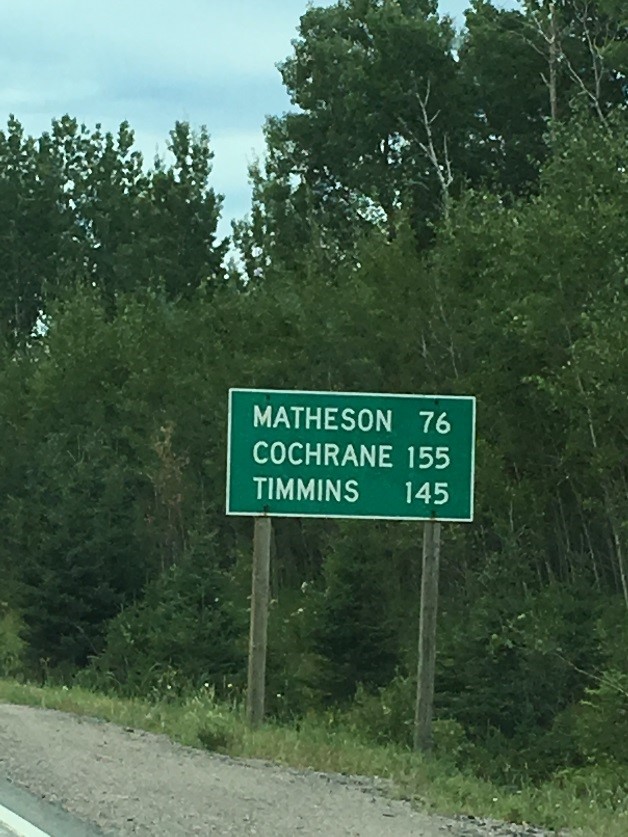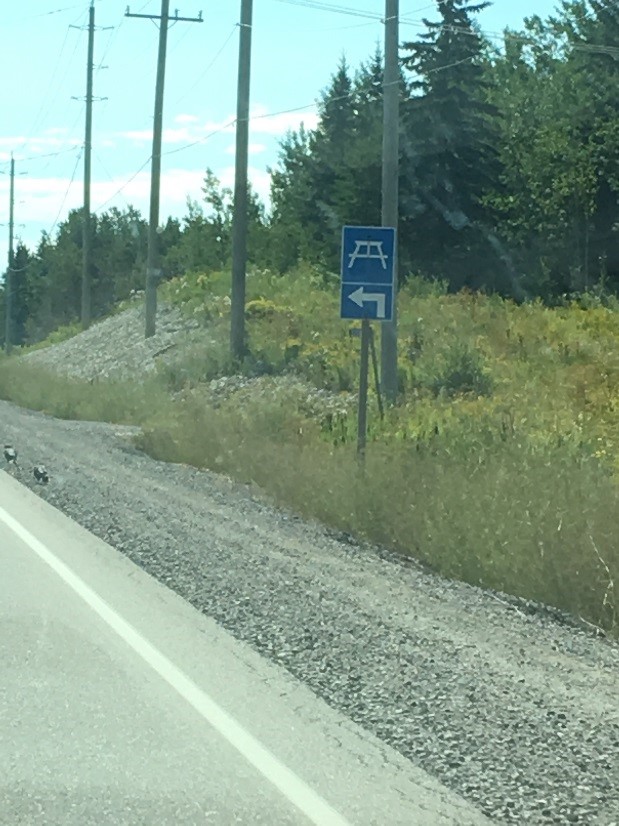The Art of Not Getting Lost: Signage in Northern Ontario
September 19, 2016 - It’s the weekend and you’re driving around Timmins looking for a nice place to stop and enjoy the sights of Northern Ontario. You heard Kettle Lakes Provincial Park is a great place to visit so off you go down highway 101. Chances are, if you’re not from the area and you don’t have a GPS, you’ll drive right past the turn off to get to the park because there is no sign pointing towards its location. Odd, right? Where are the signs?
In a recent column by Northern Policy Institute President Charles Cirtwill, he discussed directional signage in Northern Ontario and highlighted several key issues such as consistency, clarity, clutter, distance, and detail. These elements are at the heart of directional signage, which refers to signs that provide information to a visitor so that they can find their final destination. In addition to these themes, the literature on directional signage also includes: sense of place, appeal of locations, the condition of signs, and whether the signs are easy to follow. To put these themes to the test, I completed a research road trip with my colleague, Leah, to assess the state of signage from Timmins to Latchford. There was some good, bad, and ugly.
One of the biggest problems was the condition of the signs. There was a handful business signs that were located along the highway that were partially obscured by foliage. As well, at several points coming back from Latchford, there were signs that I had almost missed because the trees had nearly engulfed the sign. In addition to the surrounding greenery, there were a few signs that were faded, had small font, or were hard to read due to color combinations.


Faded business sign Foliage blocking sign
All of these elements can affect wayfinding, which is a system in which individuals use tools such as GPS, signs, branding, and so on to help navigate an area. It is important wayfinding is effective because in several U.S. studies it was found that visitation and overnight stays increase when there is clear and detailed signage.
A second observation on this particular route was that there was not a strong regional sense of place. This idea is related to brand identity, or the theme/image being portrayed about a place. Signage brand identity is useful for reinforcing a sense of place in terms of “what the visitor will experience.” Overall we felt that there was not a strong “Northern Ontario” identity being portrayed, save for the Watershed sign, historical plaques and the Temagami-Cobalt Corridor sign. We found that there were more town-centric brands that were being marketed through the use of area profile signs and tourism signs in town. While these are useful, the town-centric approach may not be conducive to tourism because according to Paul Pepe, Tourism Manager for Thunder Bay, “more consumers are driven by experiences versus an individual geopolitical boundary of a community.”


Area profile sign Temagami-Cobalt Corridor sign
A final observation was that the signs along our route were fairly straightforward and easy to follow. Clarity is crucial because one of the primary goals of an efficient and effective signage and wayfinding system is whether people can “easily find their way to a desired destination.” Despite this success, there were a few points in the road where a sign notifying me of how far away we were from home would have been helpful. As an individual who is still unfamiliar with how large Northern Ontario is, directional signs showing the distance to cities are a necessity, especially if I don’t have a GPS. Finally, it should be noted that while there were many rest stop signs, there was a significant lack of signs indicating the next gas station (although there were only a few gas stations along the way anyway). For a visitor, this can be disconcerting when judging how often to fill up a gas tank before they reach their final location. Perhaps the implementation of logo signs, which indicate the distance to gas, food, and accommodation, would benefit visitors to the North as well as provide consistency.



Tourism-Oriented Directional Sign (TODS) with km City distance sign with km Rest stop sign, no km but indicates direction
While our trip has highlighted several weaknesses in Northern Ontario signage, what’s the significance of it? Well, without proper directional signage, it can cut into the generation of tourism revenue. As noted in a 2004 report for the Western Prince Edward Island Tourism Association, the goal is to “encourage visitors to drive the less traveled regions of the province to experience the unique facets of the region, while spreading the resultant revenue throughout the province.” Considering 33.4 percent of Ontario residents from outside of Northern Ontario Region 13 came to visit in 2012, improving signs can improve the appeal of locations by making it easier for people to find their way around and increase revenue for local businesses and towns.
Overall, while the issues (as well as positives!) we found on the trip are but a few examples of what the signage is like in Northeastern Ontario, they nevertheless demonstrate common trends that can be found throughout the North. Therefore, by taking note from reports such as the 2009 Ontario Way-finding Research Study, Northern Ontario can improve signs by adopting best practices from US and Canadian models, coordinating among stakeholders, and improving consistency on various platforms like signage and travel websites. Till then, don’t get lost.
Rachel Beals is a former policy intern at Northern Policy Institute.
The content of Northern Policy Institute’s blog is for general information and use. The views expressed in this blog are those of the author and do not necessarily reflect the opinions of Northern Policy Institute, its Board of Directors or its supporters. The authors take full responsibility for the accuracy and completeness of their respective blog posts. Northern Policy Institute will not be liable for any errors or omissions in this information, nor will Northern Policy Institute be liable for any detriment caused from the display or use of this information. Any links to other websites do not imply endorsement, nor is Northern Policy Institute responsible for the content of the linked websites.
Northern Policy Institute welcomes your feedback and comments. Please keep comments to under 500 words. Any submission that uses profane, derogatory, hateful, or threatening language will not be posted. Please keep your comments on topic and relevant to the subject matter presented in the blog. If you are presenting a rebuttal or counter-argument, please provide your evidence and sources. Northern Policy Institute reserves the right to deny any comments or feedback submitted to www.northernpolicy.ca that do not adhere to these guidelines.
